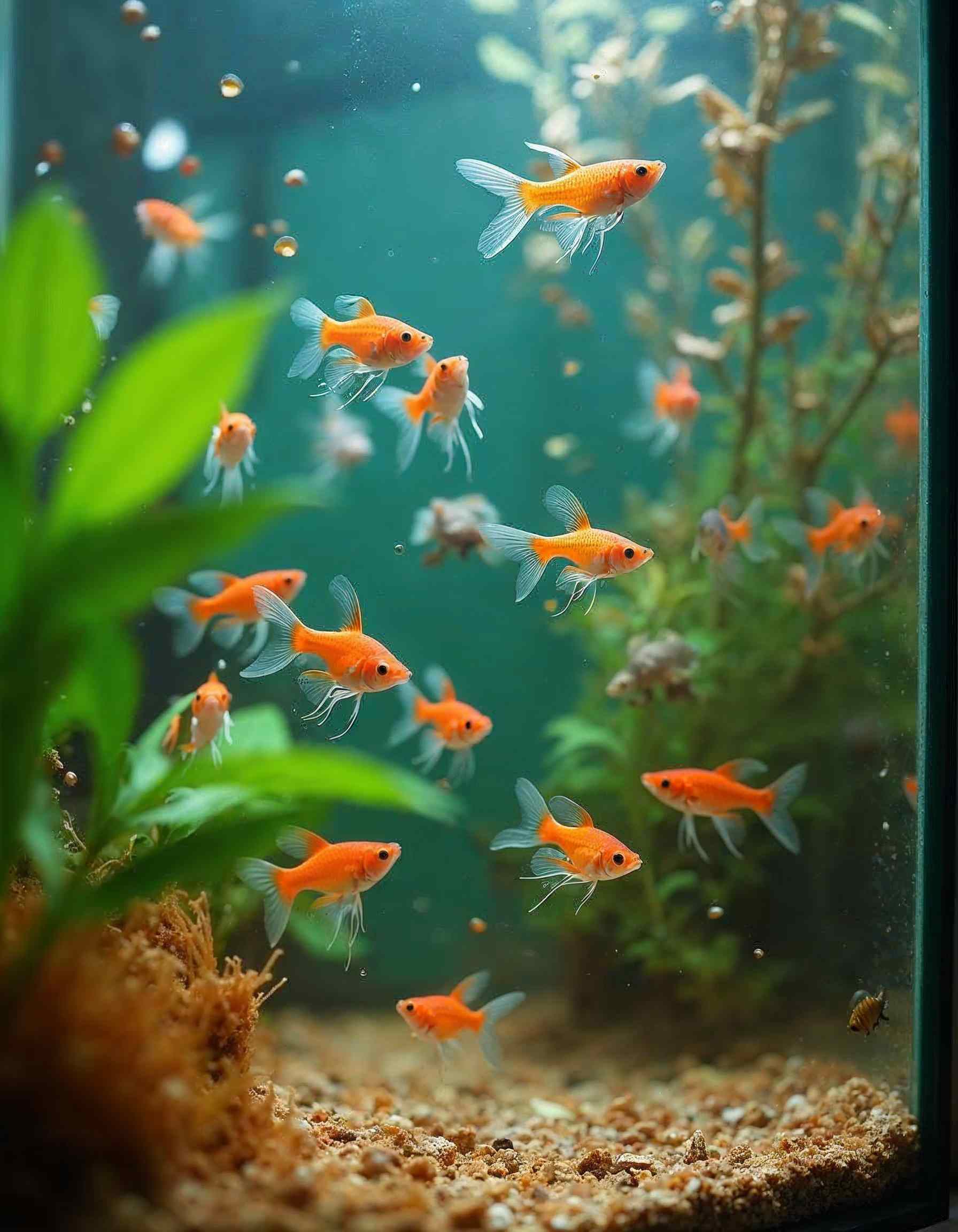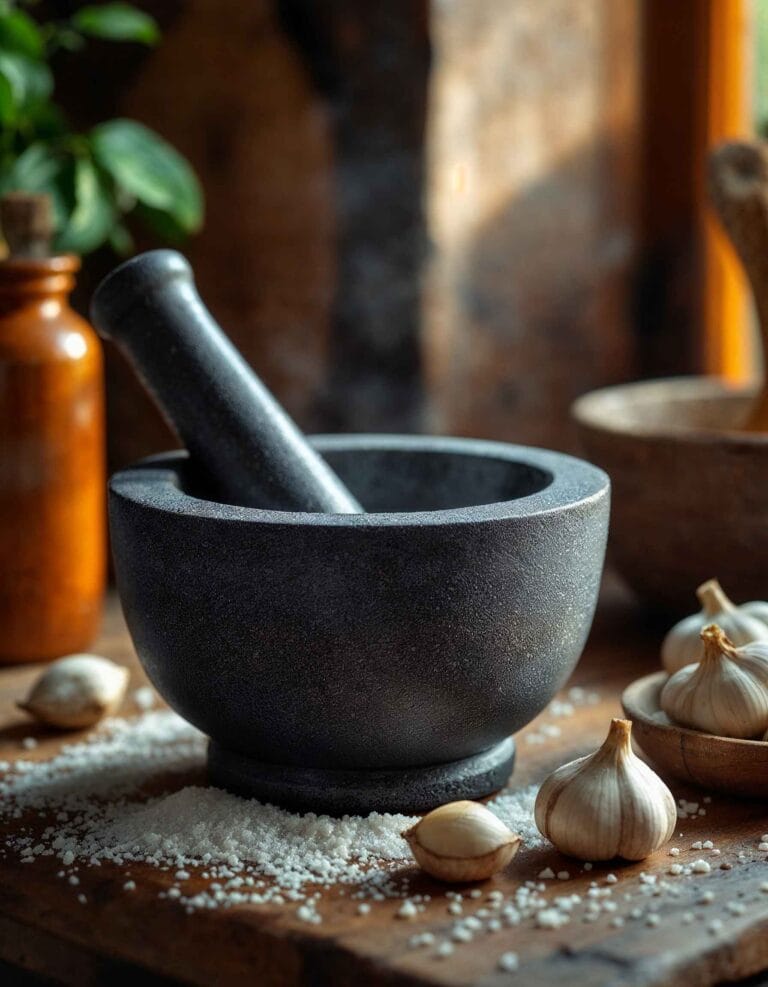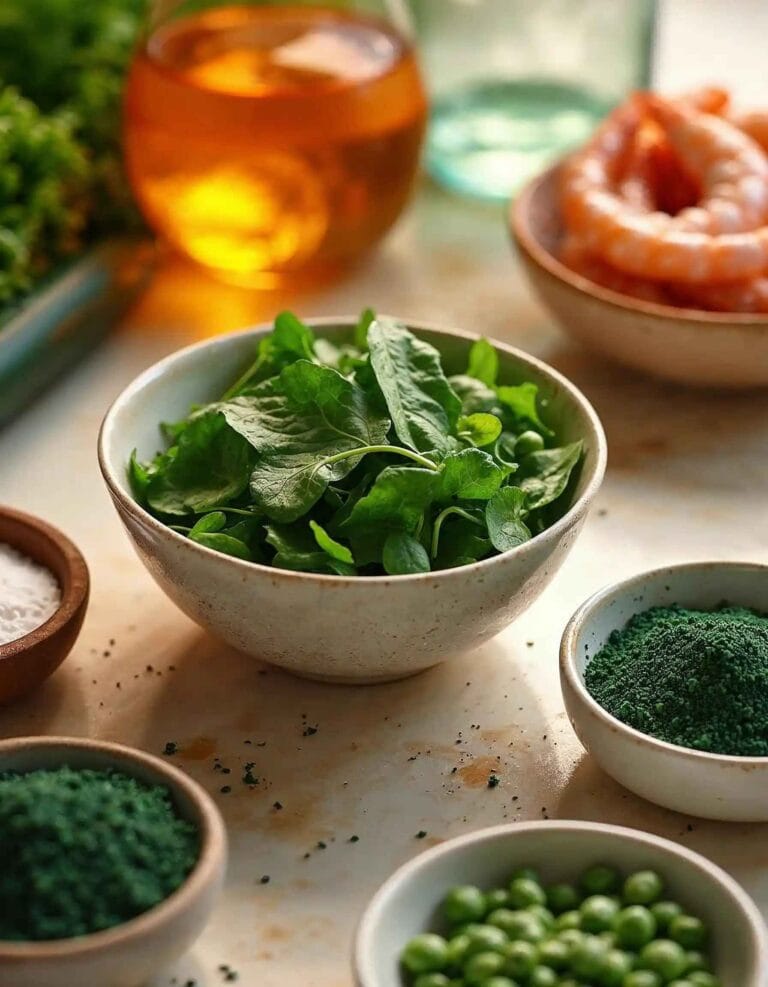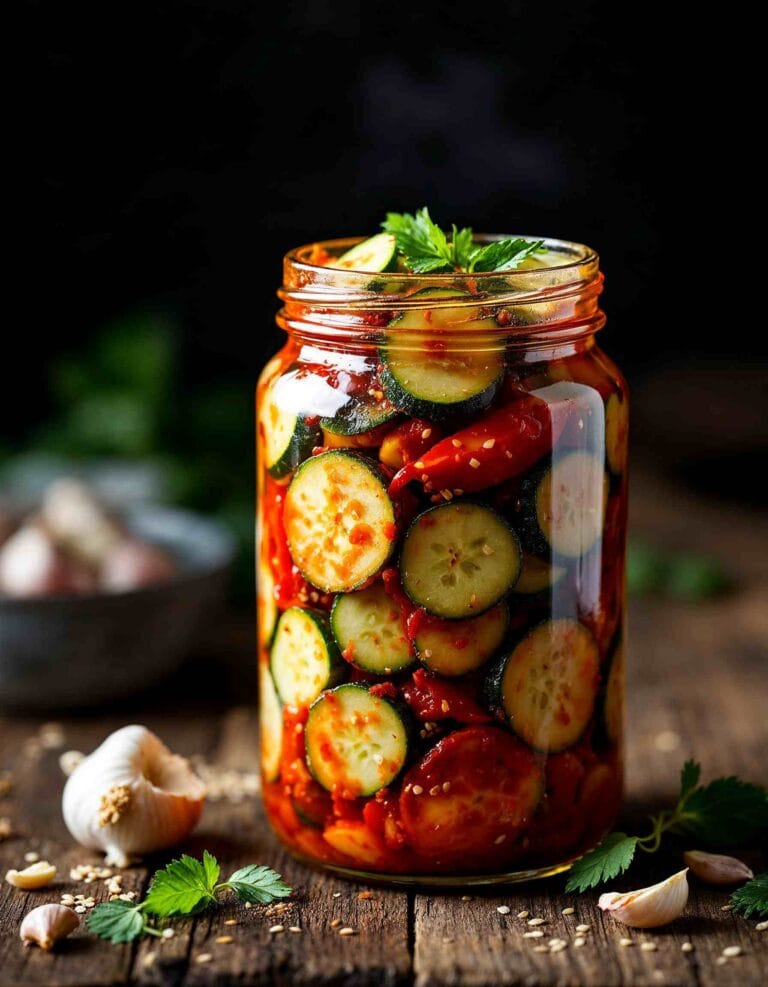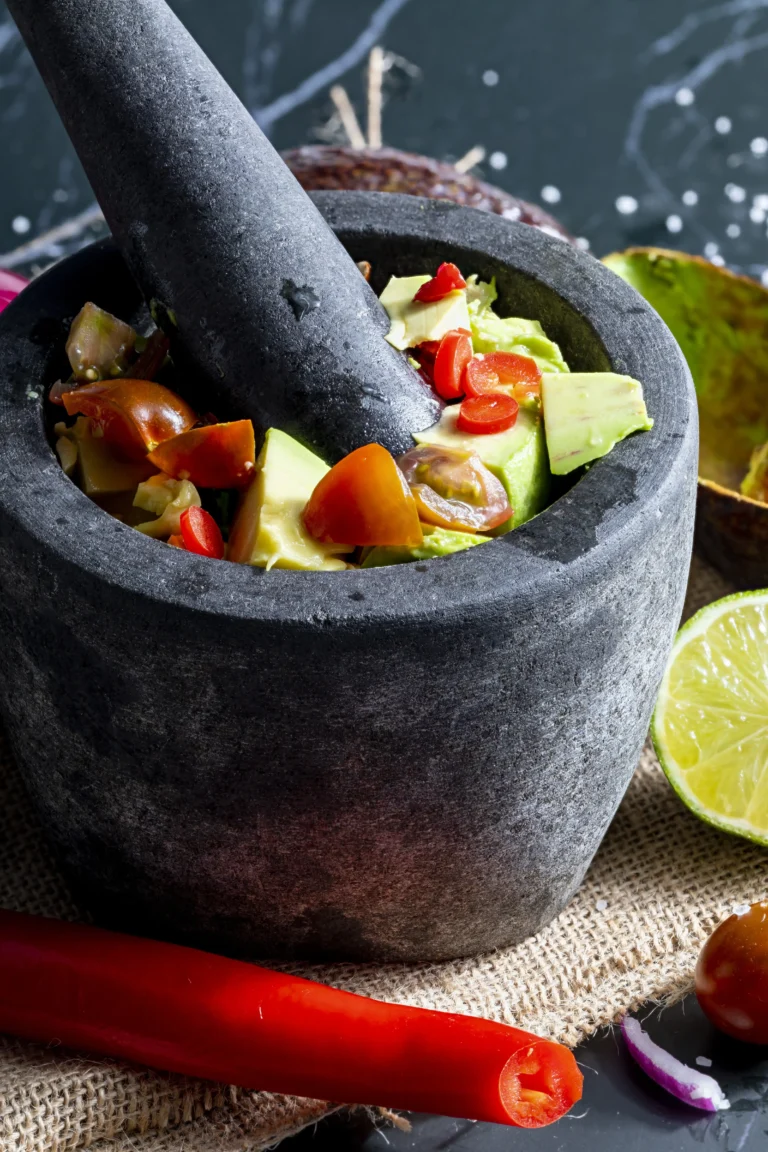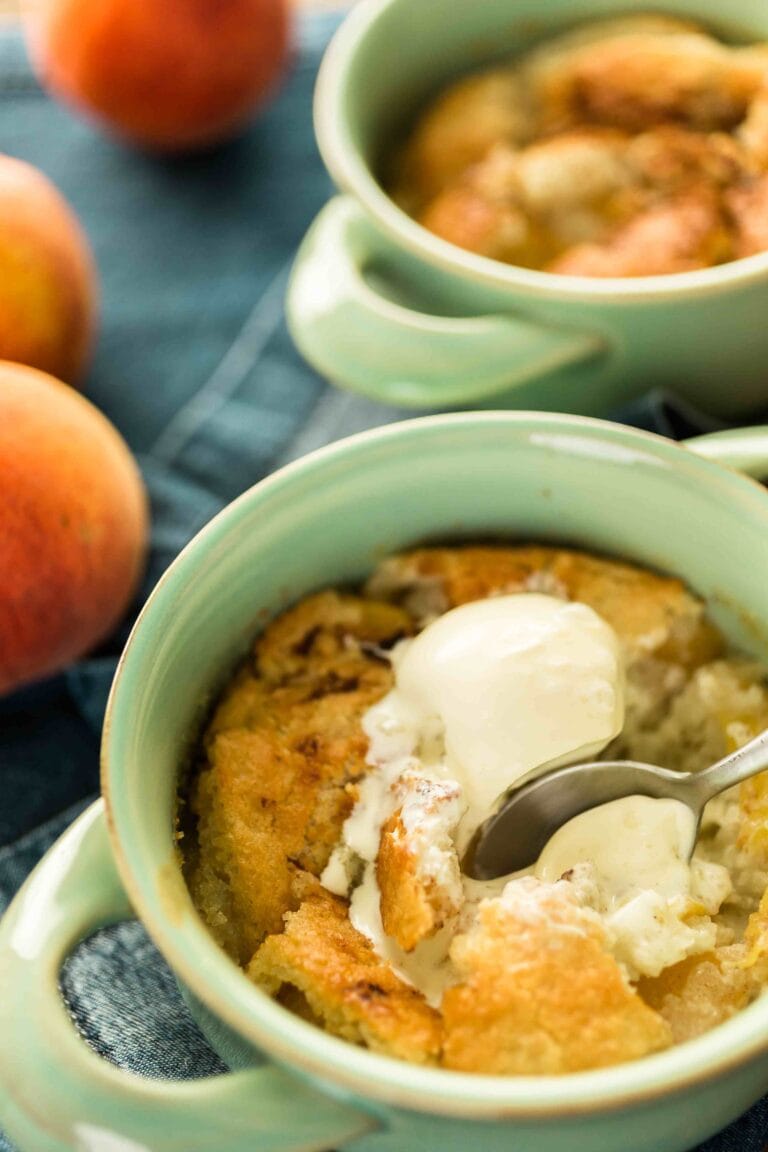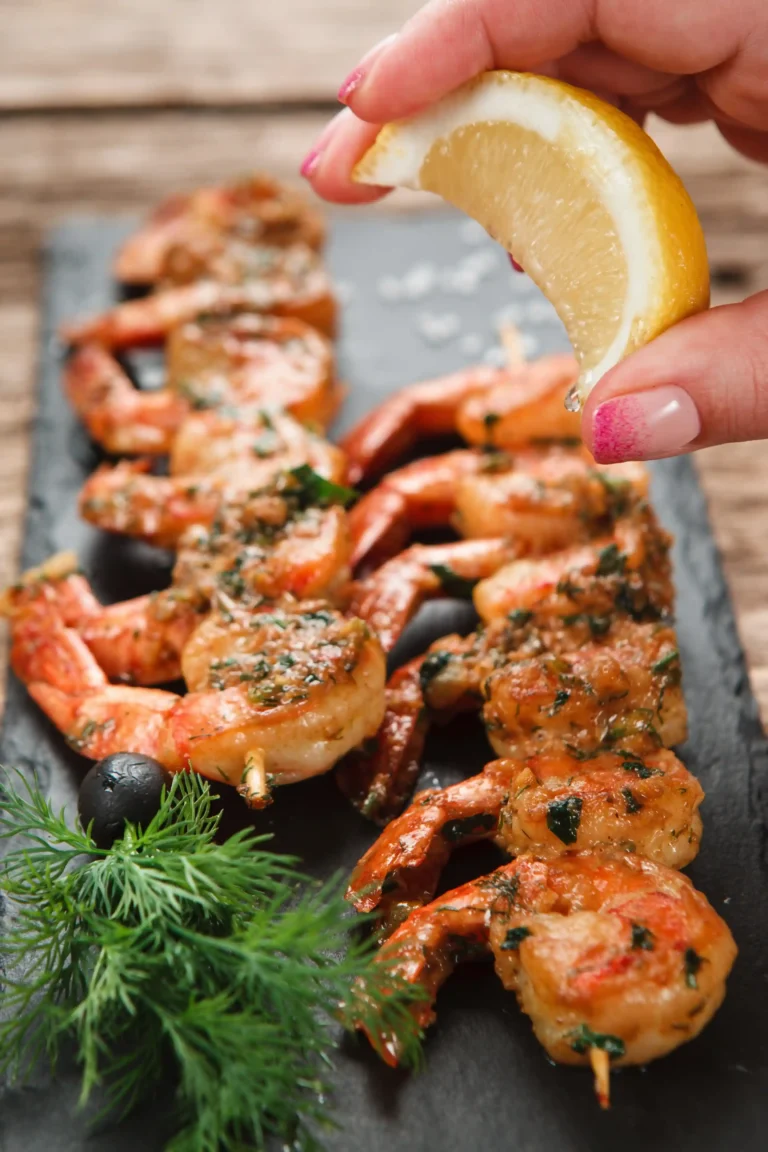How to Make Live Food for Fish: A Complete Guide to Homemade Fish Feed
When it comes to keeping aquarium fish healthy and vibrant, few dietary options are as beneficial as live food. These tiny, living organisms provide a highly nutritious and natural food source that mimics what fish eat in their natural habitat. Whether you’re raising guppies, bettas, or a variety of freshwater or saltwater species, live food stimulates your fish’s natural hunting instincts while promoting better growth, color, and reproduction.
Making live food at home might seem daunting at first, but with the right guidance, it’s a manageable and rewarding process. From understanding the nutritional benefits to learning how to culture your own live food, this guide will take you through every step. By the end, you’ll be equipped with the knowledge and tools to provide your fish with a fresh, sustainable diet that supports their overall health.
In the following sections, we’ll explore the types of live food suitable for fish, how to set up cultures, and the best practices for maintaining a reliable supply. Get ready to discover the secrets of live food and how it can transform your aquarium care routine!
For a general introduction to homemade fish food, check out our Nutritious & Easy DIY Guide for Healthy Fish.
Why Use Live Food for Fish
Fish in the wild thrive on a diet rich in live prey such as insects, worms, and tiny aquatic organisms. Offering live food in an aquarium setting not only meets their nutritional needs but also stimulates their natural behaviors. Here are the key benefits of using live food:
Nutritional Benefits
Live food provides fish with essential proteins, fats, and vitamins that are crucial for their growth, energy, and immunity. Unlike processed fish food, live organisms retain their natural nutrients, ensuring that your fish get a well-rounded diet. For instance:
- Protein-rich foods like brine shrimp and worms support muscle development.
- Omega-3 fatty acids in crustaceans improve brain and eye health.
- Carotenoids from some live foods enhance the vibrant coloration of ornamental fish.
Stimulates Natural Behavior
Feeding live food encourages hunting instincts in fish, which is particularly beneficial for predatory species. Watching fish chase daphnia or pounce on mosquito larvae can also be a fascinating experience for aquarium enthusiasts.
Variety of Options
One of the best aspects of live food is its diversity. You can provide your fish with different options, catering to their species and size. Small fry, for example, may benefit from microfauna like infusoria, while larger fish enjoy worms or crustaceans.
Types of Live Food
Live food comes in various forms, each with unique advantages and preparation methods. Below are some of the most common options:
Worms
- Bloodworms: These tiny red larvae are packed with iron and are a favorite among most fish.
- Earthworms: Ideal for larger fish, earthworms are rich in protein and easy to culture.
- Grindal worms: Perfect for small and medium-sized fish, they are an excellent option for daily feeding.
Insects and Their Larvae
- Daphnia: Commonly known as water fleas, these are an excellent source of fiber and nutrients. They also help in digestion.
- Mosquito Larvae: Easily collected from standing water, they are a great protein source for surface feeders.
Crustaceans
- Brine Shrimp: Known for their high protein content and availability, brine shrimp are suitable for fish at all life stages, especially fry.
- Copepods: These tiny crustaceans are perfect for saltwater aquariums and are a staple for marine species.
Zooplankton
- Rotifers: A microscopic live food option, rotifers are often used for feeding fry and small marine species.
- Infusoria: A must-have for breeding enthusiasts, infusoria are excellent for tiny fry.
Each of these live food options can be cultivated at home or sourced from reputable aquarium stores. In the next section, we’ll dive into the step-by-step process of setting up a live food culture and ensuring its sustainability.
Looking for recipe ideas? Visit Best Homemade Fish Food for creative options
Setting Up a Live Food Culture
Cultivating live food at home can be a cost-effective and rewarding experience. Whether you’re preparing to grow brine shrimp, daphnia, or worms, the key is creating the right environment for them to thrive.
To ensure you’re using the right ingredients, consult our Essential Guide for Healthy, Vibrant Fish.
Necessary Tools and Equipment
To start a live food culture, gather these essential items:
- Containers or Tanks: Small aquariums, buckets, or plastic tubs work well for most cultures.
- Aeration Equipment: Air pumps and air stones keep water oxygenated, especially for aquatic live food like daphnia or brine shrimp.
- Light Source: Some live foods, like algae-fed organisms, require light for growth.
- Food Supply for Live Food: For example, yeast for daphnia, spirulina powder for brine shrimp, or organic waste for worms.
Preparing the Culture Medium
Each type of live food requires a specific environment:
- Brine Shrimp: Use a saltwater solution (around 35 ppt salinity) and maintain temperatures between 77°F and 86°F.
- Daphnia: Use dechlorinated freshwater, a mild aeration system, and maintain a temperature between 65°F and 75°F.
- Worms: Create a moist, nutrient-rich bedding made from coconut coir, peat moss, or shredded newspaper.
Maintaining the Culture
Once your culture is set up, consistent maintenance is essential:
- Feed the live food regularly to ensure they reproduce and grow.
- Monitor water quality for aquatic organisms by performing partial water changes.
- Remove waste or dead organisms to prevent contamination.
How to Grow Different Types of Live Food
Each type of live food has unique requirements for cultivation. Below are step-by-step instructions for growing popular live food options:
Growing Brine Shrimp
- Set Up a Hatchery: Use a small container with a divider to keep brine shrimp eggs on one side and hatched shrimp on the other.
- Add Saltwater: Mix non-iodized salt into dechlorinated water to achieve a salinity of 35 ppt.
- Aerate and Heat: Use an air pump and maintain temperatures around 80°F for optimal hatching.
- Add Eggs: Sprinkle brine shrimp eggs into the water and wait 24–48 hours for them to hatch.
- Harvest: Use a fine mesh net to collect shrimp and rinse with freshwater before feeding.
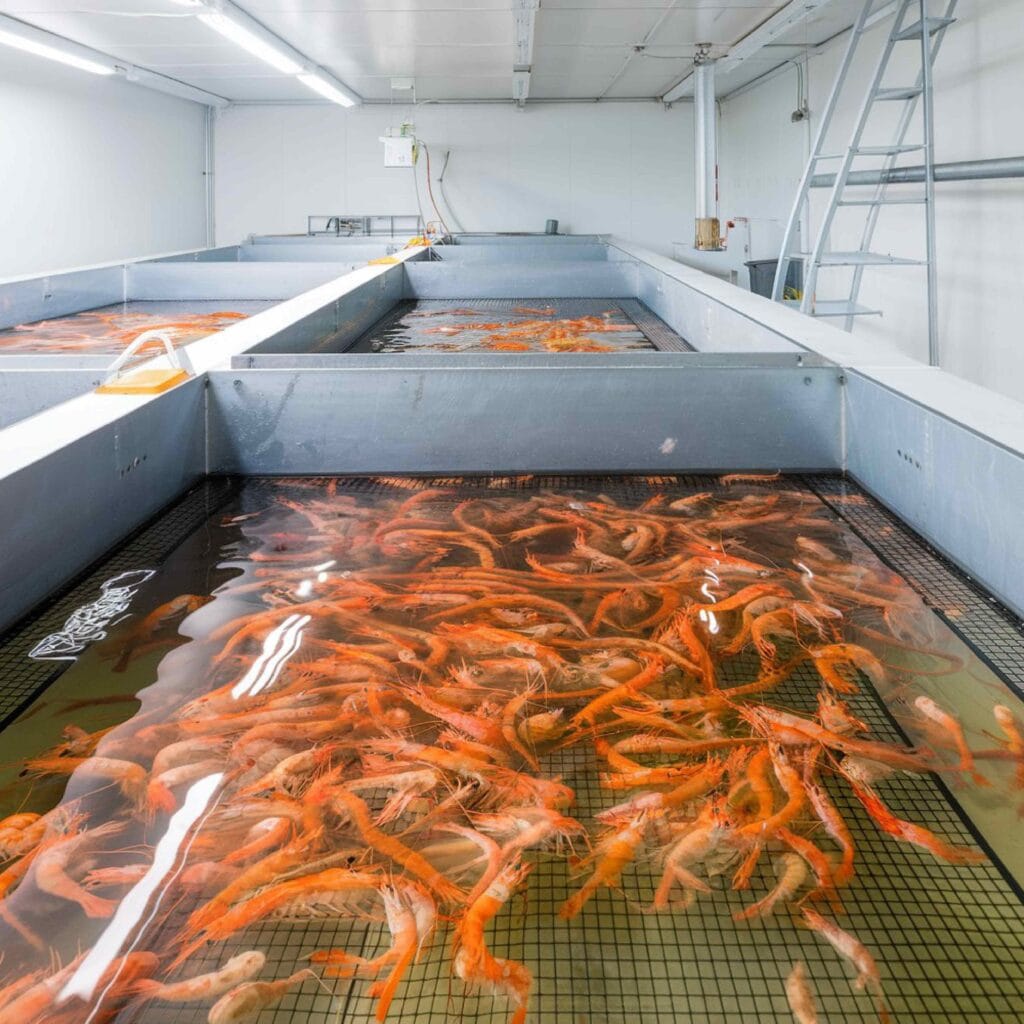
Culturing Daphnia
- Prepare the Container: Use a 5-gallon bucket or tank with dechlorinated water.
- Aerate the Water: Add an air pump to keep water moving gently.
- Feed the Daphnia: Use yeast or green water (algae-rich water) as a food source. Feed sparingly to avoid fouling the water.
- Maintain Conditions: Keep the culture in moderate light and ensure the temperature stays within 65°F to 75°F.
Setting Up a Worm Farm
- Choose a Container: Use a plastic bin with ventilation holes.
- Prepare the Bedding: Add moist coconut coir, shredded newspaper, or peat moss.
- Introduce Worms: Add starter cultures of red wigglers or grindal worms.
- Feed the Worms: Offer organic waste, such as vegetable scraps, but avoid oily or acidic foods.
- Maintain Moisture Levels: Keep the bedding damp but not soaking wet.
Culturing Mosquito Larvae
- Set Up a Standing Water Container: Use an outdoor container filled with dechlorinated water.
- Attract Mosquitoes: Place the container in a shaded area. Add organic material like grass clippings to encourage egg-laying.
- Monitor the Growth: Larvae will appear in a few days.
- Harvest Carefully: Use a fine net to collect larvae, ensuring no adult mosquitoes are released.
By following these steps, you can cultivate a variety of live food options at home. In the next section, we’ll cover harvesting techniques and how to feed live food to your fish safely.
Harvesting and Feeding Live Food
Once your live food culture is thriving, the next step is to safely harvest and feed it to your fish. Proper harvesting ensures the sustainability of your cultures and provides your fish with clean, healthy food.
How to Harvest Safely
Different live foods require specific techniques for harvesting:
- Brine Shrimp: Use a fine mesh net or siphon to collect shrimp. Rinse them in fresh water to remove excess salt before feeding.
- Daphnia: Scoop them out gently using a small net or siphon tube. Avoid removing too many at once to ensure your culture continues to thrive.
- Worms: For small worms like grindal or earthworms, gather them directly from the bedding using tweezers or your hands.
- Mosquito Larvae: Skim the larvae from the water surface with a fine net, being cautious not to leave any behind that could mature into adult mosquitoes.
How Much to Feed
Feeding the right amount of live food is crucial for your fish’s health and the balance of your tank:
- Small Fish or Fry: Feed small portions of microfauna like brine shrimp or infusoria 2–3 times a day.
- Medium Fish: Offer moderate quantities of daphnia or grindal worms once or twice daily.
- Large Predatory Fish: Feed larger live foods, such as earthworms or adult brine shrimp, every other day.
A good rule of thumb is to provide only as much food as your fish can consume within 3–5 minutes to avoid overfeeding and water pollution.
Avoiding Overfeeding
Overfeeding live food can lead to several problems, including water contamination and uneaten food decomposing in the tank. Follow these tips to avoid overfeeding:
- Feed your fish in small increments, observing their behavior to determine when they are full.
- Remove any uneaten live food promptly using a net or siphon.
- Rotate live food with other options, such as pellets or frozen food, to ensure a balanced diet.
Best Practices for Feeding Live Food
When feeding live food, cleanliness and hygiene are paramount to prevent introducing diseases or parasites into your aquarium. Follow these steps:
- Inspect the Food: Check live food for signs of contamination, such as unusual odors, discoloration, or dead organisms.
- Rinse Thoroughly: Rinse live food under clean, dechlorinated water to remove debris or harmful substances.
- Acclimate the Food: For aquatic live foods, ensure their water temperature matches your tank to avoid shocking your fish.
- Introduce Gradually: Release live food into the tank in small amounts, allowing your fish to hunt and consume at their own pace.
Live food not only nourishes your fish but also keeps them mentally stimulated as they exhibit their natural hunting behaviors.
Maintaining a Sustainable Live Food Supply
To ensure a continuous supply of live food for your fish, it’s important to keep your cultures healthy and thriving. This requires regular maintenance, proper care, and a proactive approach to prevent contamination or overharvesting.
Ensuring a Continuous Supply
Here are some strategies to maintain a steady supply of live food:
- Rotate Cultures: Maintain multiple cultures of the same food type to prevent running out in case one culture fails.
- Feed the Culture Regularly: Live food organisms need consistent nourishment. For example, daphnia thrive on yeast or algae, while worms prefer organic waste.
- Harvest Moderately: Avoid overharvesting, as this can deplete the population. Leave enough organisms to reproduce and replenish the culture.
Preventing Contamination
Contamination is a common issue in live food cultures, potentially harming both the culture and your aquarium. Follow these tips to avoid contamination:
- Use Clean Equipment: Always wash hands and tools before handling the culture.
- Change Water Regularly: For aquatic cultures like brine shrimp or daphnia, perform partial water changes weekly.
- Separate Cultures: Keep different types of live food in separate containers to prevent cross-contamination.
Cleaning and Restocking the Culture
Over time, live food cultures may accumulate waste or lose productivity. Regular cleaning and occasional restocking can keep them viable:
- Remove uneaten food and waste materials to prevent foul odors and bacterial growth.
- For worm cultures, replace the bedding every few months to maintain a clean environment.
- If the culture size dwindles, purchase a fresh starter batch to revive it.
Challenges and Solutions
Culturing live food at home is not without its challenges. However, with some troubleshooting, you can overcome these issues and keep your cultures healthy.
Preventing Pests
Pests such as mites, flies, or fungus can invade your culture, disrupting growth. Combat pests with these methods:
- Keep cultures covered with fine mesh to block insects while allowing air circulation.
- Use clean, organic food sources to reduce the risk of attracting pests.
- Inspect the culture regularly for signs of infestation and remove any affected parts immediately.
Dealing with Poor Growth
Sometimes, live food organisms fail to thrive. Common reasons and solutions include:
- Inadequate Feeding: Ensure you’re providing sufficient and appropriate food for the culture.
- Improper Temperature: Adjust the temperature to the optimal range for the specific live food. For instance, brine shrimp prefer warmer water, while daphnia thrive in cooler conditions.
- Low Aeration: Increase aeration in aquatic cultures to supply enough oxygen.
Maintaining Optimal Growth Conditions
Different types of live food have specific growth requirements. Follow these general guidelines:
- Keep aquatic cultures in well-oxygenated and slightly alkaline water.
- Avoid direct sunlight, which can overheat the culture and encourage algae overgrowth.
- For worms, maintain a moist but not waterlogged environment with proper ventilation.
By addressing these challenges proactively, you can sustain healthy live food cultures for long-term use.
In the next and final content section, we’ll explore alternatives to live food, cost considerations, environmental benefits, and provide answers to common questions about making live food for fish.
Alternatives to Culturing Live Food
While culturing live food is rewarding, it’s not the only option. There are several alternatives that can supplement or replace homemade live food, depending on your needs and resources.
Buying Live Food
Commercial live food, such as brine shrimp or bloodworms, is readily available at pet stores and online retailers. These products save time but may cost more in the long run compared to home cultivation.
Freeze-Dried and Frozen Options
For those who want the benefits of live food without the hassle of culturing, freeze-dried or frozen options are a convenient alternative:
- Freeze-Dried Food: Retains nutrients and is easy to store, but may lack the appeal of live prey for some fish.
- Frozen Food: Offers high nutritional value and variety, including brine shrimp, daphnia, and bloodworms, but requires freezer space and preparation.
Combining Live and Non-Live Food
To strike a balance between convenience and nutrition, many aquarists alternate between live and non-live food. This ensures fish receive a varied diet while reducing dependency on live cultures.
Cost Effectiveness of Making Live Food
Homemade live food is an economical choice for fish keepers, especially for those with large or multiple aquariums:
- Startup Costs: The initial investment in containers, equipment, and starter cultures can range from $20 to $50.
- Long-Term Savings: Once established, live food cultures are inexpensive to maintain, often costing just a few dollars per month for supplies.
Compared to purchasing live or frozen food regularly, home cultivation offers significant savings over time while ensuring a constant supply.
Environmental Benefits of Homemade Live Food
Culturing live food at home is an eco-friendly practice that minimizes waste and reduces your carbon footprint:
- Less Packaging Waste: Homemade food eliminates the need for disposable packaging associated with store-bought products.
- Reduced Transportation Impact: Growing food at home reduces the emissions associated with shipping commercial products.
- Sustainable Practices: By using organic waste to feed worm cultures or green water for daphnia, you can repurpose resources that would otherwise be discarded.
For more preparation techniques, read our Step-by-Step Guide to Nutritious DIY Fish Food.
FAQs
Q1: How to make live food for fish at home?
To make live food for fish at home, choose the type of live food based on your fish’s dietary needs, such as brine shrimp, daphnia, or worms. Set up a suitable culture environment, including containers, aeration (for aquatic organisms), and food for the live organisms. For example, you can hatch brine shrimp in a saltwater solution with aeration or grow daphnia in a bucket of dechlorinated water fed with yeast. Maintain the cultures regularly by feeding the organisms and keeping their environment clean.
Q2: How do you make homemade fish feed?
Homemade fish feed can be made by blending natural ingredients like vegetables (spinach, peas, carrots), proteins (boiled egg yolk, fish fillet), and supplements (spirulina, vitamins) into a paste. This mixture can then be shaped into small pellets or flakes and dried for storage. Additionally, you can provide live food, such as brine shrimp or mosquito larvae, for a more natural and nutritious option.
Q3: What are the best live foods for fish?
The best live foods for fish depend on the species and their dietary preferences. Some popular options include:
- Brine Shrimp: High in protein, ideal for fry and adult fish.
- Daphnia: Excellent for digestion and small to medium-sized fish.
- Bloodworms: Rich in iron, suitable for a variety of freshwater fish.
- Copepods: A great choice for marine species.
- Earthworms or Grindal Worms: Suitable for larger or bottom-feeding fish.
Q4: What homemade food is good for fish?
Homemade food that mimics a fish’s natural diet is best. Examples include:
- Vegetable-Based Food: Blended spinach, zucchini, and peas for herbivorous fish.
- Protein-Based Food: Boiled egg yolk, small shrimp, or fish fillet for carnivorous fish.
- Live Food: Cultured brine shrimp, daphnia, or worms for a natural feeding experience.
Homemade food allows you to control the ingredients, ensuring no harmful additives are included. Always tailor the recipe to your fish’s specific dietary needs.
Conclusion
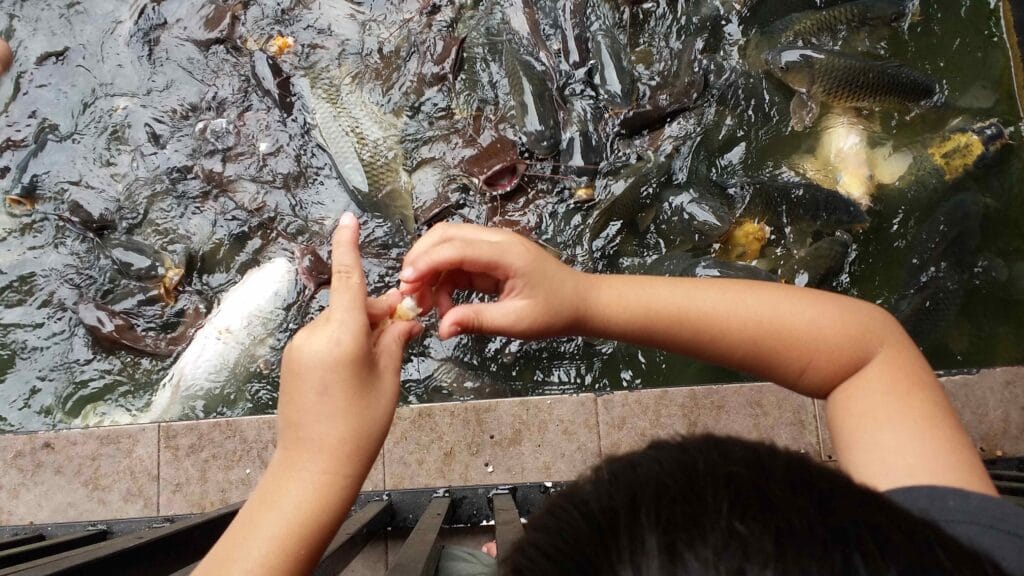
Providing live food for your fish is one of the best ways to enhance their health, vibrancy, and natural behaviors. By cultivating live food at home, you gain control over their diet while enjoying the cost-effectiveness and sustainability of the practice. With the guidance provided in this article, you’re equipped to start growing live food for your fish and reap the rewards of happier, healthier aquatic pets.
Experiment with different types of live food, maintain your cultures diligently, and embrace the satisfaction of offering your fish the freshest, most nutritious meals possible.

